Breeding shrimp successfully requires a comprehensive understanding of their specific needs, from setting up the tank and maintaining water parameters to feeding a balanced diet and fostering proper care for shrimplets. This guide provides 15 essential tips to help you create an ideal environment for shrimp breeding, enhancing your chances of success and allowing you to cultivate a thriving shrimp colony.
Hello there, fellow shrimp enthusiasts! I’m thrilled to share my journey in the fascinating world of shrimp breeding. I’ve been keeping and breeding shrimp for over a decade now, and I can tell you, it’s been quite the adventure. From my first pair of Neocaridina shrimp to my current thriving colonies of various species, I’ve learned so much and faced numerous challenges along the way.
One of the biggest hurdles I encountered early on was understanding the specific needs of different shrimp species. Each species has unique requirements, and it took me a while to figure out the right balance of water parameters, diet, and tank setup. But with patience, persistence, and a lot of research, I was able to overcome these challenges and successfully breed my shrimp.
Over the years, I’ve also learned the importance of continuous learning in this hobby. Shrimp keeping and breeding is a dynamic field, with new species, techniques, and products constantly emerging. Staying informed and open to new ideas has been key to my success and growth as a shrimp breeder.
In this guide, I’ll share my top 15 tips on how to breed shrimp, drawing from my personal experiences and the latest knowledge in the field. Whether you’re a beginner or an experienced shrimp keeper, I hope you’ll find this guide helpful and informative. So, let’s dive in and explore the captivating world of shrimp breeding together!
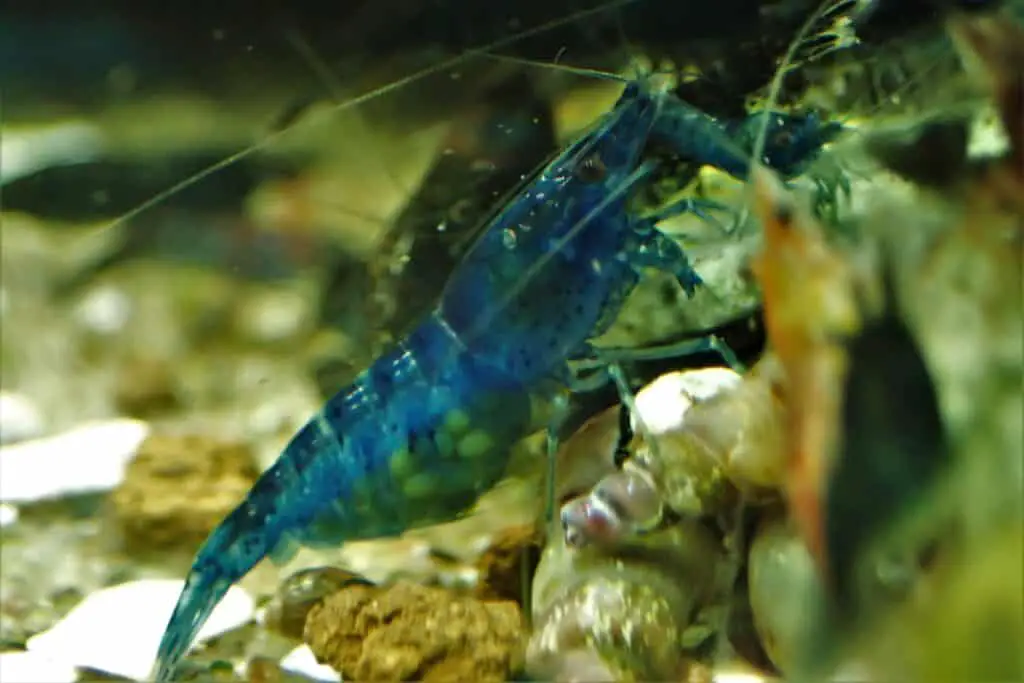
Importance of Shrimp Water Parameters
When it comes to breeding shrimp, water parameters are of utmost importance. Creating a suitable environment for your shrimp to thrive and breed involves maintaining the appropriate temperature, pH, general hardness (GH), and total dissolved solids (TDS).
Most dwarf shrimp species prefer temperatures between 22-26°C (72-79°F), with some variance depending on the specific species. For instance, Neocaridina shrimp, a popular choice among beginners, are quite adaptable and can thrive in a pH range of 6.5-8.0. On the other hand, Caridina shrimp require a more acidic pH of 5.5-6.5.
General hardness, which measures the concentration of magnesium and calcium ions in the water, also varies between species. Neocaridina shrimp prefer a GH of 6-12 degrees, while Caridina shrimp require a GH of 4-6 degrees.
Total dissolved solids (TDS) is another crucial parameter. It measures the total amount of all inorganic and organic substances contained in a liquid in molecular, ionized, or micro-granular suspended form. A TDS range of 150-300 ppm is ideal for Neocaridina shrimp, while Caridina shrimp thrive at a TDS of 100-200 ppm.
To achieve these parameters, you may need to use a combination of tap water , reverse osmosis (RO) water, and shrimp-specific salts. If you use tap water, remember to use a dechlorinator like Seachem Prime
, reverse osmosis (RO) water, and shrimp-specific salts. If you use tap water, remember to use a dechlorinator like Seachem Prime or Seachem Safe. Chlorine and chloramine, commonly found in tap water, are harmful to shrimp and must be neutralized before use.
or Seachem Safe. Chlorine and chloramine, commonly found in tap water, are harmful to shrimp and must be neutralized before use.
Regularly testing your water parameters is key to ensuring they stay within the optimal range for your shrimp. Any sudden changes or extremes can cause stress, illness, or even death among your shrimp, and can also negatively impact breeding.
In summary, understanding and maintaining the right water parameters is a fundamental aspect of shrimp breeding. It’s not just about filling a tank with water and adding shrimp; it’s about creating a stable, suitable environment where your shrimp can thrive and reproduce. With careful monitoring and adjustments as needed, you’ll be well on your way to becoming a successful shrimp breeder.
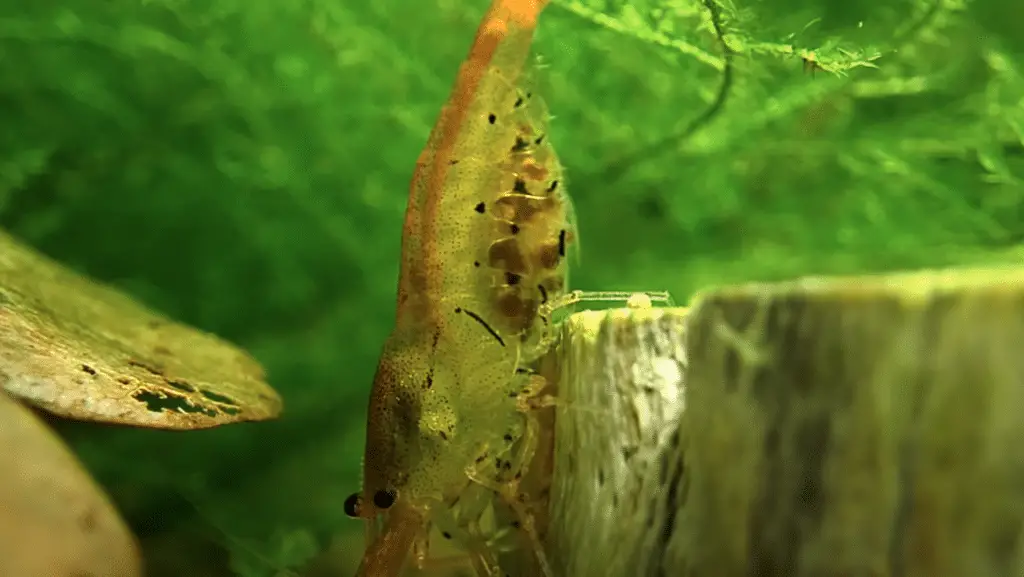
The Role of Filtration in Shrimp Breeding
Filtration plays a pivotal role in maintaining a healthy environment for your shrimp, which is essential for successful breeding. A good filtration system helps maintain water quality, provides a stable environment for your shrimp, and can even serve as a food source.
One of the most recommended filtration systems for shrimp tanks is a sponge filter . Sponge filters offer gentle filtration while providing a surface for beneficial bacteria and biofilm to grow. Biofilm, a layer of microorganisms such as bacteria and algae, is a vital food source for shrimp, especially for baby shrimp.
. Sponge filters offer gentle filtration while providing a surface for beneficial bacteria and biofilm to grow. Biofilm, a layer of microorganisms such as bacteria and algae, is a vital food source for shrimp, especially for baby shrimp.
Let’s delve into why sponge filters are an excellent choice for shrimp tanks:
- Gentle Water Flow: Unlike other types of filters that may generate strong currents, sponge filters produce a gentle water flow. This is particularly important for shrimp, as they prefer calm water conditions. The low water flow ensures that shrimp, especially baby shrimp, are not sucked into the filter and injured or killed.
- Biological Filtration: Sponge filters provide efficient biological filtration, which is essential for maintaining a stable environment in a shrimp tank. Beneficial bacteria colonize the sponge, helping to break down harmful ammonia and nitrite into less toxic nitrate. This process contributes to maintaining a healthy water quality for the freshwater shrimp.
- Surface Area for Grazing: The porous surface of a sponge filter provides an ideal environment for biofilm to grow. This natural food source is important for the shrimp’s diet and overall health.
- Low Maintenance: Sponge filters are relatively low maintenance compared to other filtration systems. They can be easily cleaned by squeezing them out in a container of tank water, preserving the beneficial bacteria while removing debris. This makes them an attractive option for shrimp keepers who want a simple, effective filtration method.
- Cost-effective: Sponge filters are generally more affordable than other types of filters. This makes them an appealing choice for shrimp hobbyists who want to establish a shrimp tank without breaking the bank.
A good filtration system is crucial for successful shrimp breeding. Sponge filters, with their gentle water flow, efficient biological filtration, natural food source, low maintenance, and cost-effectiveness, make them an ideal choice for shrimp tanks. By providing a clean, stable environment, you’re setting the stage for your shrimp to thrive and breed successfully.
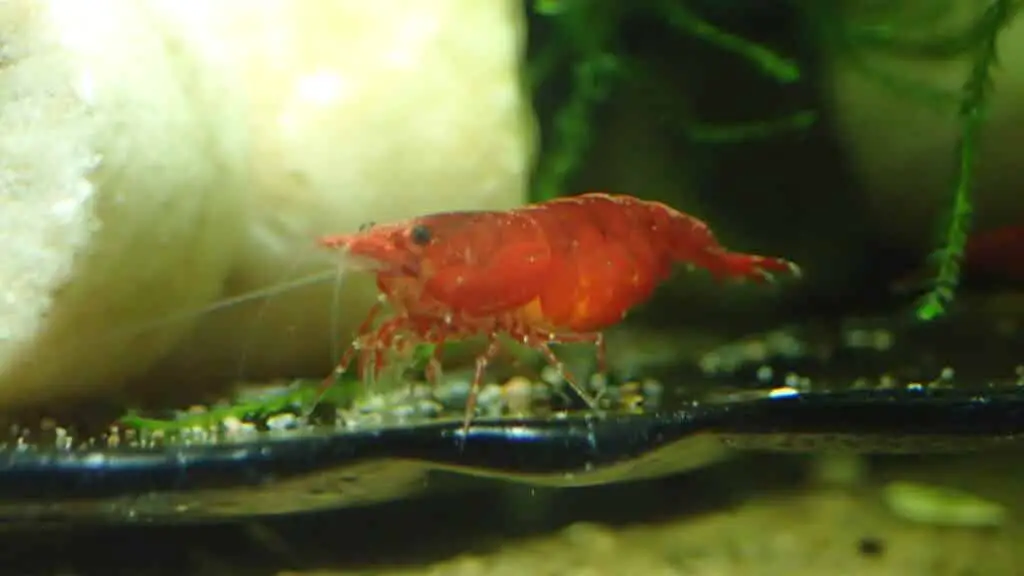
Choosing the Right Substrate for Your Shrimp
Choosing the right substrate for your shrimp tank is more than just an aesthetic decision. The substrate plays a crucial role in maintaining water parameters, providing a surface for beneficial bacteria to grow, and offering a place for shrimp to forage. The type of substrate you choose can significantly impact the health and breeding success of your shrimp.
When it comes to shrimp keeping, there are two main types of substrates to consider: inert substrates and active substrates.
Inert Substrates
Inert substrates, such as sand or gravel, do not alter the water parameters. They are a good choice for shrimp species that prefer neutral to slightly alkaline water conditions, such as Neocaridina shrimp. Inert substrates are also easy to clean and come in a variety of colors and sizes, allowing you to customize the look of your tank.
Active Substrates
Active substrates, on the other hand, are designed to lower the pH and soften the water. These substrates are typically made from fired clay or soil and are packed with essential minerals. They are ideal for shrimp species that prefer soft, acidic water conditions, such as Caridina shrimp. Active substrates also promote the growth of beneficial bacteria and biofilm, providing a natural food source for your shrimp.
When choosing a substrate, consider the following factors:
- Shrimp Species: Different shrimp species have different substrate requirements. Research your specific shrimp species to determine whether they prefer inert or active substrates.
- Water Parameters: If your tap water is hard and alkaline, and you plan to keep shrimp that prefer soft, acidic water, an active substrate can help adjust the water parameters.
- Aesthetics: The color of the substrate can impact the visibility of your shrimp. Dark substrates can make the colors of your shrimp stand out, while light substrates may cause them to appear washed out.
- Grain Size: The size of the substrate particles can affect the ease of maintenance and the behavior of your shrimp. Fine substrates are easier for shrimp to sift through and forage, but they can compact over time and may be harder to clean.
Choosing the right substrate is an important step in setting up a successful shrimp tank. By considering the needs of your specific shrimp species and the characteristics of different substrates, you can create an environment that promotes the health and breeding success of your shrimp.
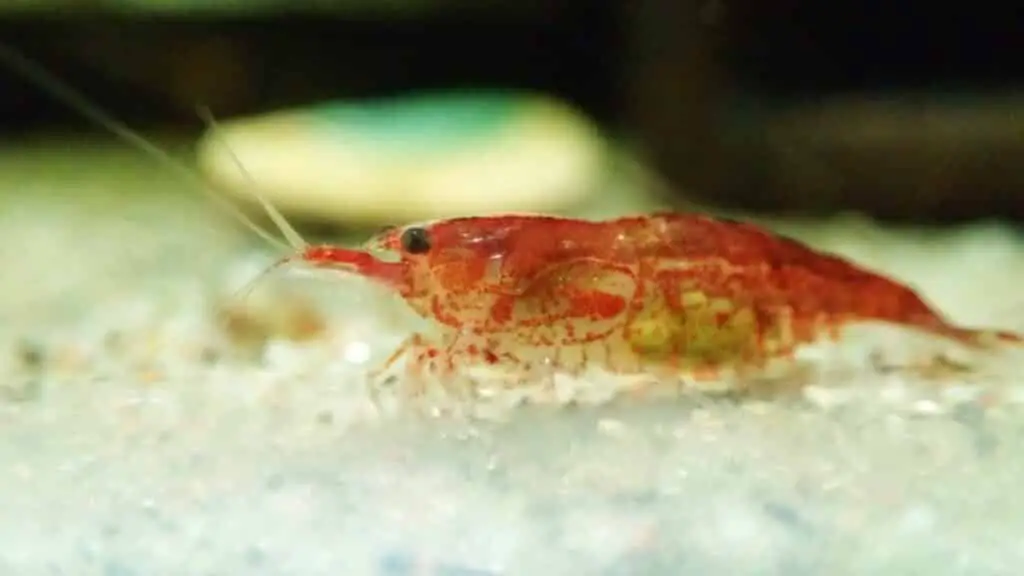
Maintaining Your Shrimp Tank for Optimal Breeding Conditions
Maintaining your shrimp tank is a crucial part of ensuring optimal breeding conditions. A well-maintained tank promotes the health and well-being of your shrimp, which in turn increases their likelihood of breeding. Here are some key aspects of tank maintenance that you should pay attention to:
Regular Water Changes
Regular water changes are essential to maintaining water quality in your shrimp tank. Over time, waste products can build up in the water, leading to poor water conditions that can stress your shrimp and inhibit breeding. Aim to change about 10-20% of the water every week, using dechlorinated water that matches the temperature and parameters of your tank water.
Monitoring Water Parameters
As we’ve discussed earlier, shrimp are sensitive to water parameters. Regularly test your water for pH, temperature, GH, KH, and TDS to ensure they are within the optimal range for your shrimp species. Any sudden changes or extremes can stress your shrimp and disrupt breeding.
Cleaning the Tank
While shrimp do a good job of cleaning up algae and detritus, you’ll still need to do some cleaning yourself. Remove any uneaten food after a few hours to prevent it from decaying and fouling the water. Also, clean the sides of the tank as needed to remove algae build-up. However, leave some algae for your shrimp to graze on.
Checking the Equipment
Regularly check your equipment, such as the heater and filter, to ensure they are working properly. A malfunctioning heater or filter can quickly lead to poor water conditions that can stress your shrimp and inhibit breeding.
Observing Your Shrimp
Spend time each day observing your shrimp. Look for signs of stress or illness, such as unusual behavior or color changes. Healthy, happy shrimp are more likely to breed, so it’s important to address any issues as soon as you notice them.
Maintaining your shrimp tank is not a one-time task, but an ongoing commitment. By keeping up with regular water changes, monitoring water parameters, cleaning the tank, checking your equipment, and observing your shrimp, you can create optimal breeding conditions and increase your chances of success in shrimp breeding.
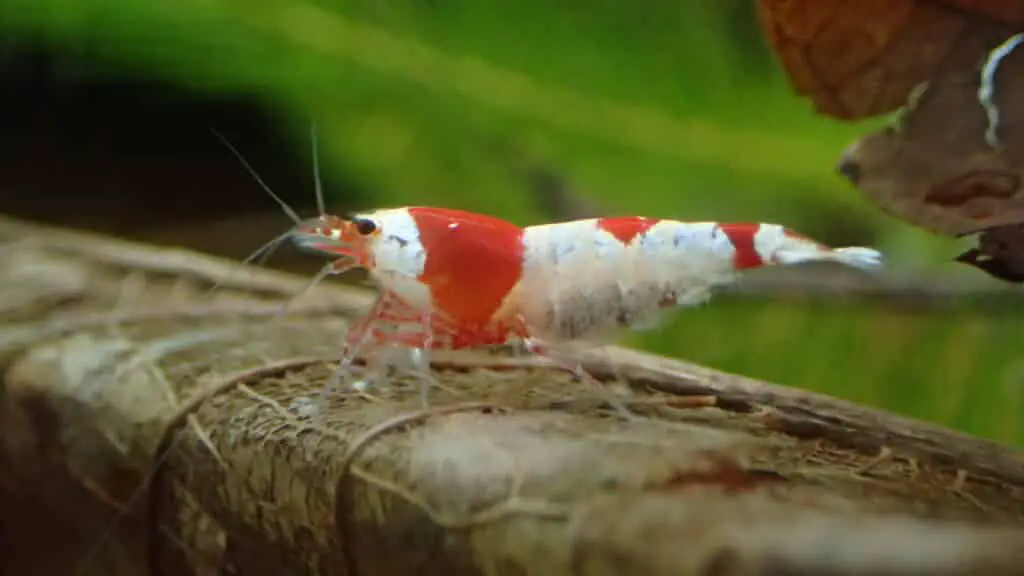
Setting Up Your Tank for Successful Shrimp Breeding
Setting up your tank properly is the first step towards successful shrimp breeding. A well-set-up tank provides a suitable environment for your shrimp to thrive and breed. Here are some key considerations when setting up your shrimp breeding tank:
Tank Size
When it comes to shrimp breeding, bigger is usually better. A larger tank offers more stable water parameters, which is crucial for shrimp health and breeding. A 10-gallon tank is often recommended as a good starting point for shrimp breeding.
Filtration
As discussed earlier, a sponge filter is an excellent choice for a shrimp breeding tank. It provides gentle filtration, promotes the growth of beneficial bacteria, and offers a surface for biofilm to grow, which is a vital food source for shrimp.
Substrate
Choose a substrate that suits the needs of your shrimp species. Inert substrates are suitable for shrimp that prefer neutral to slightly alkaline water, while active substrates are ideal for shrimp that prefer soft, acidic water.
Decorations
Provide plenty of hiding places for your shrimp using decorations such as driftwood, rocks, and shrimp tubes. These provide a sense of security for your shrimp and can encourage breeding. Live plants, such as Java moss and Anubias, also provide additional surfaces for biofilm to grow and offer hiding places for shrimplets.
Heater
While not always necessary, a heater can help maintain a stable temperature in your tank, especially in colder climates. Most shrimp prefer temperatures between 22-26°C (72-79°F).
Lighting
Adequate lighting promotes the growth of algae and biofilm, which are important food sources for shrimp. However, too much light can cause excessive algae growth and stress your shrimp. Aim for a balance, with about 8-10 hours of light per day.
Water Parameters
Before adding your shrimp, make sure your water parameters are within the optimal range for your shrimp species. This includes temperature, pH, GH, KH, and TDS.
Setting up your tank properly is crucial for successful shrimp breeding. By considering the needs of your shrimp and providing a suitable environment, you can increase your chances of breeding success. Remember, patience is key. Allow your tank to cycle and stabilize before adding your shrimp, and then give them time to adjust and start breeding.
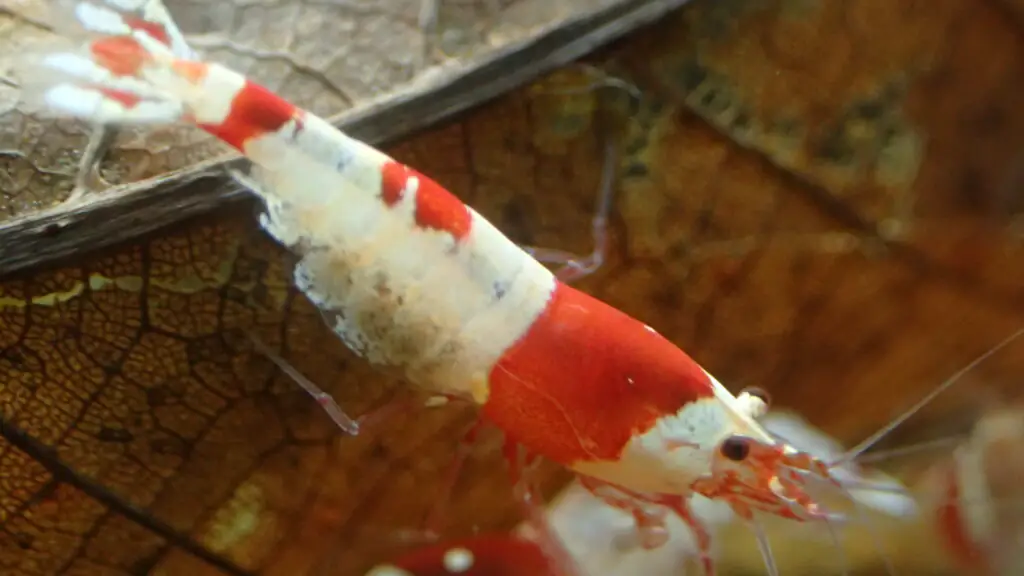
Selecting Suitable Tank Mates for Your Shrimp
Choosing the right tank mates for your shrimp can be a bit of a balancing act. On one hand, you want to add diversity and interest to your tank. On the other hand, you need to ensure that your shrimp are safe and stress-free, which is essential for successful breeding. Here are some factors to consider when selecting tank mates for your shrimp:
Size and Temperament
As a general rule, any fish that can fit a shrimp in its mouth is not a suitable tank mate. Even if the fish doesn’t actively hunt your shrimp, the constant threat can stress your shrimp and inhibit breeding. Similarly, aggressive or overly active fish can stress your shrimp. Look for small, peaceful fish that won’t see your shrimp as food.
Diet
Some fish and invertebrates have similar diets to shrimp and can compete with them for food. This can be particularly problematic when feeding specialized shrimp foods that are meant to promote breeding. Consider the dietary needs of any potential tank mates to ensure they won’t outcompete your shrimp for food.
Water Parameters
Different fish and invertebrates have different requirements for water parameters. Make sure any tank mates you choose have similar requirements to your shrimp. This will make it easier to maintain suitable conditions for all your tank inhabitants.
Breeding Considerations
If you’re serious about shrimp breeding, you may want to consider a shrimp-only tank. Even the most shrimp-friendly fish can pose a threat to shrimplets. A shrimp-only tank eliminates this risk and allows your shrimp to breed without disturbance.
Here are a few examples of suitable tank mates for shrimp:
- Small, Peaceful Fish: Species like Otocinclus Catfish, Pygmy Corydoras, and small Tetras can make good tank mates for shrimp. They are peaceful, small, and unlikely to bother your shrimp.
- Snails: Snails can be excellent tank mates for shrimp. They are peaceful, don’t compete with shrimp for food, and can even help clean up leftover food and algae.
- Other Shrimp: Different species of shrimp can often be kept together, as long as their water parameter requirements are similar. However, be aware that some shrimp species can interbreed, which can result in less colorful offspring.
Selecting suitable tank mates for your shrimp is an important consideration for successful shrimp breeding. By choosing tank mates that are peaceful, compatible in terms of diet and water parameters, and unlikely to disturb your shrimp, you can create a diverse, interesting, and shrimp-friendly tank.

Providing a Balanced Diet for Your Shrimp
Feeding your shrimp a balanced diet is essential for their health and breeding success. Shrimp are omnivores and scavengers, and in the wild, they eat a variety of foods, including algae, detritus, and small organisms. In your aquarium, it’s important to replicate this varied diet to ensure your shrimp get all the nutrients they need.
Here are some key components of a balanced shrimp diet:
Commercial Shrimp Food
There are many commercial shrimp foods available that are formulated to provide a balanced diet for your shrimp. These foods often come in pellet or granule form and contain a mix of plant and animal ingredients. They are fortified with essential vitamins and minerals to promote shrimp health and breeding.
Vegetables
Shrimp love to eat vegetables, which provide important vitamins and fiber. Blanched zucchini, spinach, peas, and cucumber are all good options. Be sure to remove any uneaten vegetables after 24 hours to prevent them from decaying and fouling the water.
Protein
While shrimp will get some protein from commercial shrimp food, it can be beneficial to supplement their diet with additional protein sources, especially during breeding. Frozen or live foods like brine shrimp, daphnia, and bloodworms are all good options.
Algae and Biofilm
Algae and biofilm are a natural part of a shrimp’s diet and provide important nutrients. Encourage the growth of algae and biofilm in your tank by providing plenty of surfaces (like plants, rocks, and driftwood) and adequate lighting.
Calcium and Minerals
Shrimp need calcium and other minerals to form their exoskeletons. These can be provided through commercial shrimp foods, mineral blocks, and by using a calcium-rich substrate.
When feeding your shrimp, remember that less is more. Shrimp have small appetites, and overfeeding can lead to poor water quality. Start with a small amount of food and adjust as needed based on how much your shrimp eat.
Providing a balanced diet for your shrimp is crucial for their health and breeding success. By offering a variety of foods and ensuring your shrimp get all the nutrients they need, you can promote their well-being and increase your chances of successful shrimp breeding.
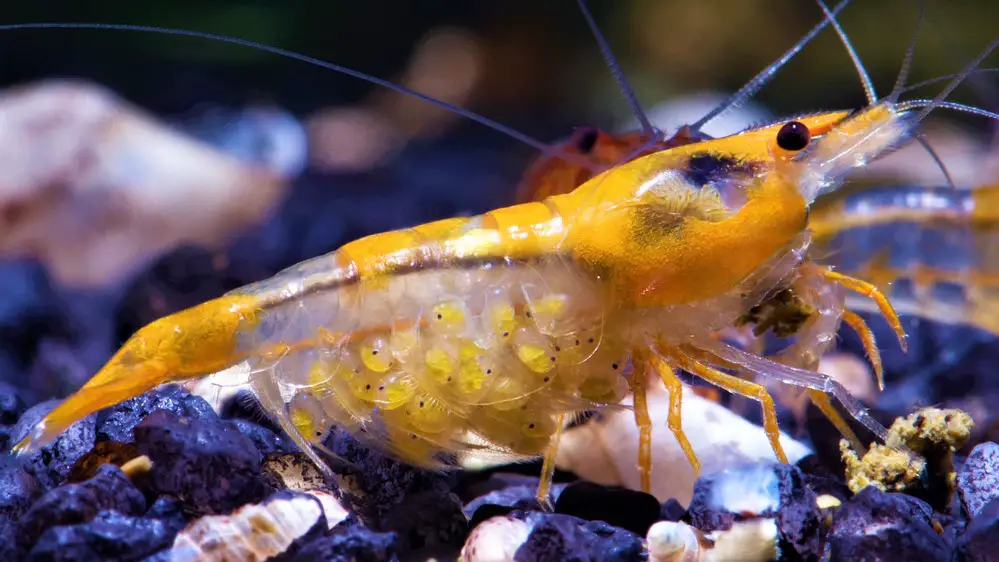
Identifying and Encouraging Shrimp Breeding Triggers
Shrimp breeding is a fascinating process, and understanding the triggers that encourage it can significantly increase your success rate. While each species of shrimp may have slightly different breeding triggers, there are some common factors that can stimulate breeding in most freshwater shrimp species.
Age and Maturity
Shrimp typically start breeding when they reach sexual maturity. For most species, this happens when they are about 2-4 months old or when they reach a certain size. Ensuring your shrimp are well-fed and healthy can help them reach maturity faster.
Water Parameters
Stable and suitable water parameters are crucial for shrimp breeding. Sudden changes in parameters like temperature, pH, or hardness can stress your shrimp and inhibit breeding. Regularly test your water and make adjustments as needed to keep the parameters within the optimal range for your shrimp species.
Diet
A balanced and nutritious diet can stimulate shrimp breeding. Foods rich in protein can be particularly beneficial during the breeding period. Consider supplementing your shrimp’s diet with high-quality commercial shrimp food, as well as fresh vegetables and occasional protein-rich treats.
Water Changes
Regular water changes can stimulate shrimp breeding. This is because in the wild, the influx of fresh water during the rainy season often triggers breeding in shrimp. Try doing a 10-20% water change with slightly cooler water to simulate this effect.
with slightly cooler water to simulate this effect.
Presence of Males and Females
Obviously, to breed shrimp, you need both males and females. Female shrimp are usually larger and have a rounder undercarriage compared to males. If you’re having trouble getting your shrimp to breed, check to make sure you have both males and females in your tank.
Molting
Molting is a key part of the shrimp breeding process. After a female shrimp molts, she releases pheromones into the water to signal to the males that she is ready to breed. You can encourage molting by providing a diet rich in calcium and other minerals, which are needed for shell development.
Identifying and encouraging shrimp breeding triggers can help you increase your success rate in shrimp breeding. By providing the right conditions and care, you can stimulate your shrimp to breed and enjoy the fascinating process of watching your shrimp colony grow.
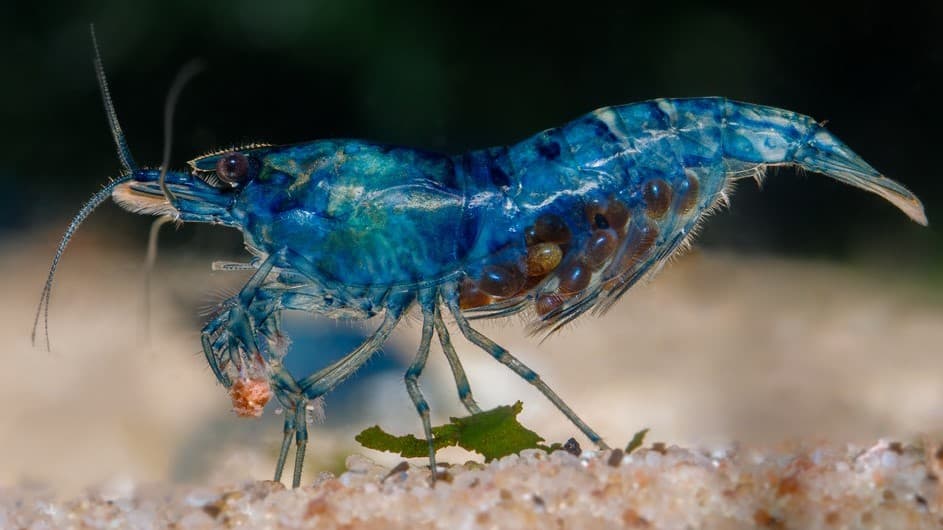
Recognizing and Caring for Berried Female Shrimp
A “berried” female shrimp is a sight to behold and a sign that your efforts towards breeding are paying off. The term “berried” refers to a female shrimp carrying eggs under her abdomen, which look like tiny berries. Recognizing a berried female and knowing how to care for her can significantly improve the survival rate of the shrimplets.
Recognizing a Berried Female Shrimp
A berried female shrimp is relatively easy to identify. You’ll notice a cluster of small, round eggs under her abdomen, which she holds in place with her swimmerets (the small, leg-like appendages under her body). The color of the eggs can vary depending on the shrimp species, but they are often yellow, green, or brown.
The female will carry the eggs for about 2-4 weeks, depending on the species and the water temperature. During this time, you’ll see her regularly fanning the eggs with her swimmerets to provide them with oxygen.
Caring for a Berried Female Shrimp
Once you’ve identified a berried female, there are several steps you can take to care for her and increase the chances of the eggs hatching successfully:
- Avoid Stress: Stress can cause a berried female to drop her eggs. Avoid making any major changes to the tank during this time, such as large water changes or rearranging the decorations.
- Provide a Balanced Diet: A balanced diet is crucial for the health of the berried female and the development of the eggs. Continue feeding a variety of foods, including commercial shrimp food, vegetables, and occasional protein-rich treats.
- Ensure Good Water Quality: Good water quality is essential for the survival of the eggs. Keep the water parameters stable and within the optimal range for your shrimp species.
- Provide Plenty of Hiding Places: Berried females and newly hatched shrimplets will appreciate plenty of hiding places. Live plants, rocks, and shrimp tubes can provide shelter and a sense of security.
- Prepare for the Shrimplets: Once the eggs hatch, the shrimplets will need food. They will feed on biofilm in the tank, but you can also provide powdered shrimp food to ensure they get the nutrients they need.
Recognizing and caring for a berried female shrimp is an exciting part of the shrimp breeding process. By providing the right care and conditions, you can help ensure the successful hatching of the eggs and the survival of the shrimplets.
Raising Shrimplets: From Birth to Maturity
Raising shrimplets (baby shrimp) from birth to maturity is one of the most rewarding aspects of shrimp keeping. It’s a joy to watch these tiny creatures grow and develop into adult shrimp. However, shrimplets have specific needs that differ from adult shrimp, and understanding these needs can significantly increase their survival rate.
Feeding Shrimplets
Shrimplets feed primarily on biofilm, a layer of microorganisms that naturally forms on surfaces in the tank. Biofilm is rich in nutrients and provides an excellent food source for shrimplets. However, in a new or overly clean tank, biofilm may be in short supply. In this case, you can supplement their diet with powdered shrimp food, which is easier for shrimplets to eat than the larger pellets or granules fed to adult shrimp.
Water Quality
Shrimplets are more sensitive to poor water quality than adult shrimp. It’s crucial to maintain stable water parameters and carry out regular water changes to prevent the build-up of harmful substances. However, be careful when changing water, as large or sudden changes can stress shrimplets. It’s often safer to do smaller, more frequent water changes when raising shrimplets.
Safety
Shrimplets are tiny and can easily get sucked into a filter intake. If your filter doesn’t already have a sponge cover, consider adding one to prevent this. Also, provide plenty of hiding places for shrimplets to retreat to when they feel threatened. Plants, moss, and small caves or tubes work well for this.
Growth and Development
Shrimplets will gradually grow and develop over several weeks. They will go through several molts during this time, shedding their old exoskeleton and forming a new one. It’s important to leave the old exoskeletons in the tank, as shrimp will eat them to reabsorb the valuable minerals they contain.
Observation
Keep a close eye on your shrimplets and monitor their progress. Regular observation can help you spot any problems early and take action to resolve them. Look for active, grazing shrimplets – this is usually a good sign that they are healthy and doing well.
Raising shrimplets from birth to maturity requires careful attention to their diet, water quality, safety, and growth. With the right care, you can watch your shrimplets grow into healthy, mature shrimp, ready to start the breeding cycle all over again. It’s a rewarding journey that brings the fascinating world of shrimp keeping to life.

The Art and Science of Selective Shrimp Breeding
Selective breeding is a fascinating aspect of shrimp keeping that allows hobbyists to enhance certain traits in their shrimp population. This process involves choosing specific shrimp to breed based on desirable characteristics, such as color, pattern, or size. Over time, these traits can become more pronounced in the offspring, leading to a uniquely beautiful and valuable shrimp colony.
Understanding Genetics
The basis of selective breeding lies in understanding shrimp genetics. Shrimp inherit traits from their parents through genes, which are segments of DNA that carry instructions for the shrimp’s characteristics. By choosing parents with desirable traits, you can increase the likelihood that these traits will be passed on to the offspring.
Choosing Breeding Stock
The first step in selective breeding is to choose your breeding stock. Look for shrimp that display the traits you want to enhance. This could be a particular color, a unique pattern, or even a certain size. Remember, the traits you select may not appear in all the offspring, especially in the early generations.
Isolating Breeding Stock
Once you’ve chosen your breeding stock, you’ll need to isolate them in a separate tank. This prevents them from breeding with other shrimp and ensures that the traits you’re selecting for are passed on to the next generation.
Breeding and Selection
Allow your chosen shrimp to breed, and then observe the offspring. Select the shrimplets that best display the traits you’re looking for and remove the rest from the breeding tank. These selected shrimplets will form the next generation of your breeding stock.
Patience and Persistence
Selective breeding is a long-term project that requires patience and persistence. It may take many generations to achieve the results you’re looking for. But the reward – a colony of shrimp with enhanced, desirable traits – is well worth the effort.
The art and science of selective shrimp breeding offer a deeper level of engagement with the hobby. It allows you to influence the development of your shrimp colony and create something truly unique. Whether you’re aiming for the brightest red cherry shrimp or the most strikingly patterned crystal shrimp, selective breeding brings a new dimension to the world of shrimp keeping.
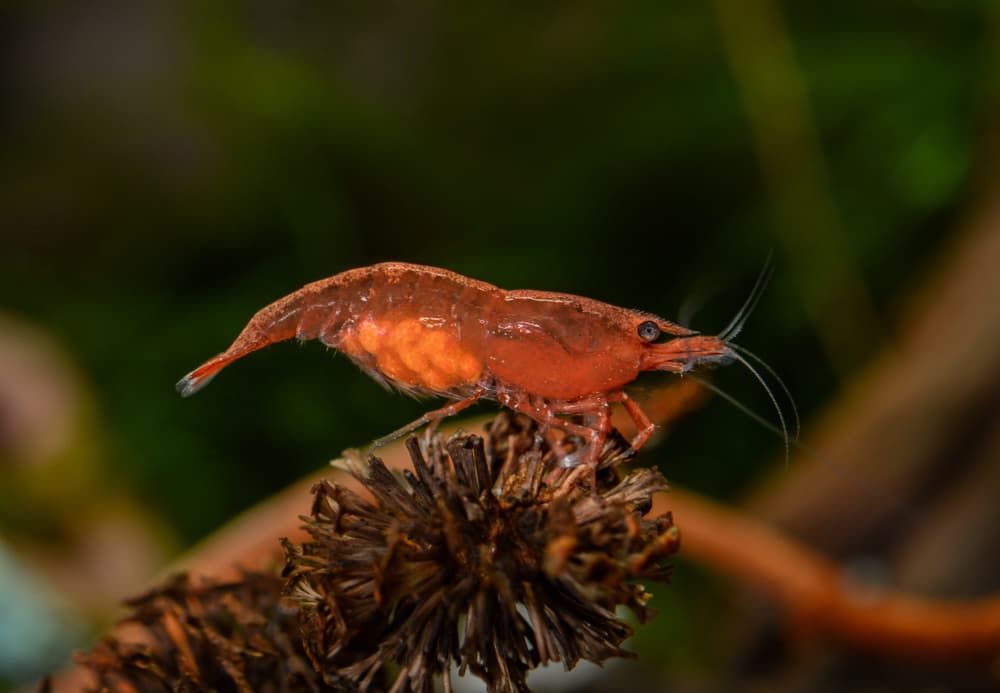
Managing Your Shrimp Population to Prevent Overpopulation
Shrimp are prolific breeders, and without proper management, it’s possible for a shrimp tank to become overpopulated. Overpopulation can lead to competition for resources, poor water quality, and increased disease transmission, all of which can negatively impact the health and breeding success of your shrimp. Here are some strategies for managing your shrimp population to prevent overpopulation:
Monitor Your Population
Regularly observe your shrimp and keep an eye on their numbers. If you notice a significant increase in population, it may be time to take action to prevent overpopulation.
Limit Food
One of the main factors that contribute to overpopulation is an abundance of food. By limiting the amount of food you provide, you can control the population growth. Shrimp can survive on a surprisingly small amount of food, and overfeeding can lead to other problems like poor water quality and disease.
Increase Tank Size or Add More Tanks
If you have the space and resources, consider increasing your tank size or adding more tanks. This provides more space for your shrimp and can help prevent overpopulation. However, remember that more tanks mean more maintenance, so make sure you’re prepared for the extra work.
Sell or Give Away Shrimp
If your shrimp population continues to grow despite your best efforts, consider selling or giving away some of your shrimp. This not only helps manage your population but can also provide a little extra income or help spread the joy of shrimp keeping to others.
Use Shrimp as Feeders
If you keep larger fish or other aquatic pets that eat shrimp, you can use excess shrimp as feeders. However, this should be done with caution to avoid transmitting diseases.
Managing your shrimp population is an important part of shrimp keeping. By monitoring your population, limiting food, increasing tank size, and selling or giving away shrimp, you can prevent overpopulation and ensure a healthy, balanced environment for your shrimp. Remember, a well-managed shrimp tank is not only healthier but also more enjoyable to observe and maintain.

Troubleshooting Common Shrimp Breeding Issues
While shrimp breeding can be a rewarding aspect of shrimp keeping, it’s not without its challenges. From shrimp not breeding to high mortality rates among shrimplets, there are several issues you may encounter. Here’s how to troubleshoot some common shrimp breeding issues:
Shrimp Not Breeding
If your shrimp aren’t breeding, check the following:
- Age and Maturity: Shrimp typically start breeding when they reach sexual maturity, which is usually around 2-4 months old. If your shrimp are younger than this, give them more time.
- Water Parameters: Shrimp are sensitive to water parameters. Make sure your temperature, pH, GH, KH, and TDS are within the optimal range for your shrimp species.
- Diet: A balanced and nutritious diet can stimulate shrimp breeding. Make sure you’re providing a variety of foods, including commercial shrimp food, vegetables, and occasional protein-rich treats.
- Stress: Stress can inhibit breeding in shrimp. This can be caused by poor water quality, inappropriate tank mates, lack of hiding places, or even frequent disturbances around the tank.
High Mortality Rate Among Shrimplets
If you’re noticing a high mortality rate among your shrimplets, consider the following:
- Water Quality: Shrimplets are more sensitive to water quality than adult shrimp. Regularly test your water and make adjustments as needed to keep the parameters stable and within the optimal range for your shrimp species.
- Food: Shrimplets primarily feed on biofilm, but in a new or overly clean tank, biofilm may be in short supply. Supplement their diet with powdered shrimp food, which is easier for shrimplets to eat than the larger pellets or granules fed to adult shrimp.
- Safety: Shrimplets are tiny and can easily get sucked into a filter intake. Consider adding a sponge cover to your filter intake to prevent this.
While you may encounter challenges in shrimp breeding, most issues can be resolved with careful observation and adjustments to your care routine. Remember, successful shrimp breeding requires patience and persistence. With time and experience, you can increase your success rate and enjoy the rewarding process of raising your own shrimp colony.

Expanding Your Knowledge and Skills in Shrimp Breeding
Shrimp breeding is a journey of continuous learning. As you gain experience and encounter different situations, you’ll naturally expand your knowledge and skills. However, there are also proactive steps you can take to further your understanding and enhance your shrimp breeding success. Here are some suggestions:
Read Books and Online Resources
There are many books and online resources dedicated to shrimp keeping and breeding. These can provide a wealth of information on different shrimp species, their care requirements, breeding strategies, and more. Regularly reading and researching can help you stay up-to-date with the latest knowledge and techniques.
Join Shrimp Keeping Communities
Joining online shrimp keeping communities, such as forums or social media groups, can be incredibly beneficial. These communities are full of experienced shrimp keepers who are often willing to share their knowledge and advice. You can learn a lot from their experiences, ask questions, and even share your own knowledge with others.
Attend Workshops or Seminars
If there are workshops or seminars on shrimp keeping and breeding in your area, consider attending. These events can provide hands-on learning opportunities and allow you to connect with other shrimp enthusiasts. You might also get the chance to learn from experts in the field.
Experiment with Different Shrimp Species
Once you’re comfortable with breeding one type of shrimp, consider trying a different species. Different shrimp species have different care and breeding requirements, and breeding a new species can help you expand your skills and knowledge.
Practice Selective Breeding
Selective breeding is an advanced skill that can significantly enhance your shrimp breeding experience. By selectively breeding your shrimp for certain traits, you can learn more about shrimp genetics and create a uniquely beautiful shrimp colony.
Expanding your knowledge and skills in shrimp breeding is a rewarding endeavor that can enhance your success and enjoyment of the hobby. Whether you’re reading books, joining communities, attending events, experimenting with different species, or practicing selective breeding, every step you take on this journey brings you closer to becoming a master shrimp breeder.
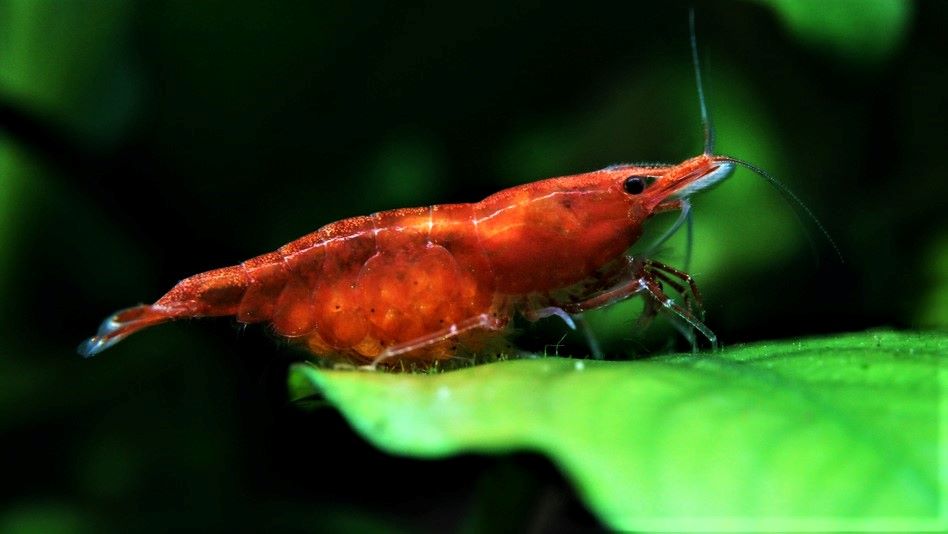
Turning Your Shrimp Breeding Hobby into a Profitable Venture
If you’ve mastered the art of shrimp breeding and find yourself with a thriving shrimp colony, you might be considering turning your hobby into a profitable venture. Selling home-bred shrimp can be a rewarding way to earn some income while sharing your passion with others. Here’s how you can turn your shrimp breeding hobby into a profitable venture:
Know Your Market
Before you start selling your shrimp, it’s important to understand the market. Research what types of shrimp are popular and in demand. Also, consider the competition. If there are many breeders selling the same type of shrimp, it might be harder to make sales.
Breed High-Quality Shrimp
The quality of your shrimp will significantly impact your success in selling them. Focus on breeding healthy, vibrant shrimp with strong characteristics. If you’re breeding for specific traits, such as color or pattern, make sure these traits are clearly visible in your shrimp.
Set Up a Sales Channel
You’ll need a platform to sell your shrimp. This could be an online marketplace, a personal website, or even a social media page. Make sure to take clear, high-quality photos of your shrimp and write detailed descriptions to attract potential buyers.
Price Your Shrimp Appropriately
Pricing your shrimp can be tricky. You need to cover your costs and make a profit, but you also need to be competitive. Research what similar shrimp are selling for and price your shrimp accordingly.
Provide Excellent Customer Service
Good customer service can set you apart from other sellers. Be responsive to inquiries, handle transactions professionally, and resolve any issues promptly and courteously. Happy customers are more likely to become repeat customers and recommend you to others.
Consider the Legalities
Before you start selling, make sure you’re aware of any legal requirements. This could include obtaining a business license, collecting sales tax, or following specific regulations for shipping live animals.
Turning your shrimp breeding hobby into a profitable venture can be a rewarding way to share your passion with others and earn some income. By understanding your market, breeding high-quality shrimp, setting up a sales channel, pricing your shrimp appropriately, providing excellent customer service, and considering the legalities, you can set yourself up for success in the world of shrimp selling

Conclusion & Call to Action
In a nutshell, shrimp breeding is a fascinating and rewarding aspect of shrimp keeping. From setting up your tank and selecting your breeding stock, to managing your shrimp population and troubleshooting common issues, every step of the journey offers opportunities for learning and growth. Ultimately, the success in shrimp breeding comes down to patience, persistence, and a deep understanding of your shrimp’s needs.
On a final note, remember that you’re not alone in this journey. There’s a whole community of shrimp keepers out there who are ready to share their knowledge and experiences. If you ever need help or advice, don’t hesitate to reach out. You can also check out the Aquarium Shrimp Keeping group on Facebook for more tips and support.
Lastly, whether you’re breeding shrimp for the joy of it, for selective breeding, or even for a profitable venture, the most important thing is to enjoy the process. Shrimp keeping is a hobby that brings us closer to the fascinating world of these tiny creatures, and that’s something truly special.
Happy Shrimp Keeping!
FAQ
Q. Are shrimp easy to breed?
A. Yes, most species of freshwater shrimp are relatively easy to breed in a well-maintained aquarium. They typically start breeding when they reach sexual maturity, which is usually around 2-4 months old. Providing a balanced diet, stable water parameters, and a stress-free environment can stimulate breeding.
Q. How does shrimp breeding work?
A. Shrimp breeding begins when a female shrimp, carrying eggs in her saddle, molts. After molting, she releases pheromones into the water, attracting male shrimp for mating. The fertilized eggs then move to the female’s underbelly, where she carries them until they hatch into shrimplets.
Q. How many shrimp do I need to start breeding?
A. To start breeding shrimp, you need at least one male and one female. However, having a group of at least 10 shrimp can increase the chances of having both males and females and can lead to a more successful breeding outcome.
Q. How easy is it to breed freshwater shrimp?
A. Breeding freshwater shrimp is generally straightforward with the right conditions. This includes providing a suitable environment with the correct water parameters, a balanced diet, and a stress-free environment. Regular monitoring and maintenance of the tank are also crucial for successful breeding.
Q. What is the best size for a shrimp breeding tank?
A. The size of the tank for shrimp breeding can vary depending on the species and the number of shrimp. However, a tank of about 30-40 gallons is often recommended for serious shrimp breeding. For smaller scale or beginner breeders, a 10-gallon tank can be a good start.
